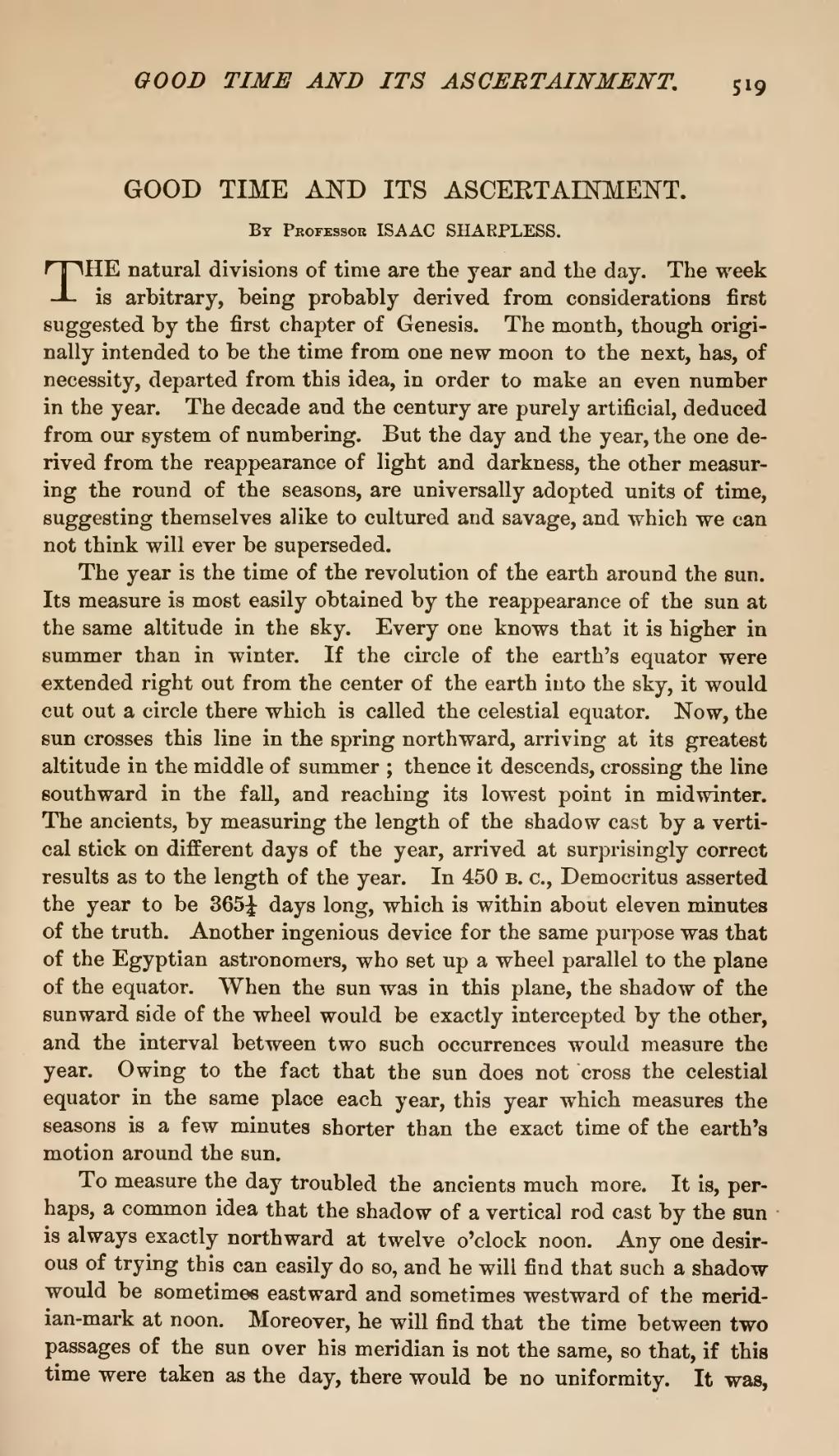| GOOD TIME AND ITS ASCERTAINMENT. |
By Professor ISAAC SHARPLESS.
THE natural divisions of time are the year and the day. The week is arbitrary, being probably derived from considerations first suggested by the first chapter of Genesis. The month, though originally intended to be the time from one new moon to the next, has, of necessity, departed from this idea, in order to make an even number in the year. The decade and the century are purely artificial, deduced from our system of numbering. But the day and the year, the one derived from the reappearance of light and darkness, the other measuring the round of the seasons, are universally adopted units of time, suggesting themselves alike to cultured and savage, and which we can not think will ever be superseded.
The year is the time of the revolution of the earth around the sun. Its measure is most easily obtained by the reappearance of the sun at the same altitude in the sky. Every one knows that it is higher in summer than in winter. If the circle of the earth's equator were extended right out from the center of the earth into the sky, it would cut out a circle there which is called the celestial equator. Now, the sun crosses this line in the spring northward, arriving at its greatest altitude in the middle of summer; thence it descends, crossing the line southward in the fall, and reaching its lowest point in midwinter. The ancients, by measuring the length of the shadow cast by a vertical stick on different days of the year, arrived at surprisingly correct results as to the length of the year. In 450 b. c, Democritus asserted the year to be 36514days long, which is within about eleven minutes of the truth. Another ingenious device for the same purpose was that of the Egyptian astronomers, who set up a wheel parallel to the plane of the equator. When the sun was in this plane, the shadow of the sunward side of the wheel would be exactly intercepted by the other, and the interval between two such occurrences would measure the year. Owing to the fact that the sun does not "cross the celestial equator in the same place each year, this year which measures the seasons is a few minutes shorter than the exact time of the earth's motion around the sun.
To measure the day troubled the ancients much more. It is, perhaps, a common idea that the shadow of a vertical rod cast by the sun is always exactly northward at twelve o'clock noon. Any one desirous of trying this can easily do so, and he will find that such a shadow would be sometimes eastward and sometimes westward of the meridian-mark at noon. Moreover, he will find that the time between two passages of the sun over his meridian is not the same, so that, if this time were taken as the day, there would be no uniformity. It was,
